Related Research Articles

Brixton is a district in South London, part of the London Borough of Lambeth, England. The area is identified in the London Plan as one of 35 major centres in Greater London. Brixton experienced a rapid rise in population during the 19th century as communications with central London improved.

Lambeth is a London borough in South London, England, which forms part of Inner London. Its name was recorded in 1062 as Lambehitha and in 1255 as Lambeth. The geographical centre of London is at Frazier Street near Lambeth North tube station, though nearby Charing Cross on the other side of the Thames in the City of Westminster is traditionally considered the centre of London.

Brian Leonard Paddick, Baron Paddick, is a British life peer and retired police officer. He was the Liberal Democrat candidate for the London mayoral elections of 2008 and of 2012, and until his retirement in May 2007 was a deputy assistant commissioner in the Metropolitan Police Service.
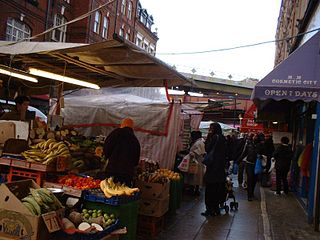
Brixton Market comprises a street market in the centre of Brixton, south London, and the adjacent covered market areas in nearby arcades Reliance Arcade, Market Row and Granville Arcade.
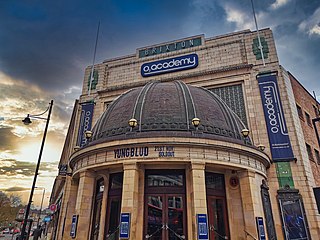
Brixton Academy (originally known as the Astoria Variety Cinema, previously known as Carling Academy Brixton, currently named O2 Academy Brixton as part of a sponsorship deal with the O2 brand) is a mid-sized concert venue located in South West London, in the Lambeth district of Brixton.
The Brixton riots of 1995 began on 13 December after the death of a black 26-year-old, Wayne Douglas, in police custody. Douglas had allegedly robbed a couple in bed at knifepoint hours earlier. Trouble broke out after what had been a peaceful protest outside the Brixton Police Station where the death occurred. With several hundred people involved, the riot resulted in damage to property and vehicles in the area. Police sealed off a three-kilometre area around Brixton in south London.

The 1981 Brixton riot, or Brixton uprising, was a series of clashes between mainly black youths and the Metropolitan Police in Brixton, London, between 10 and 12 April 1981. It resulted from racist discrimination against the black community by the mainly white police, especially the police's increased use of stop-and-search in the area, and ongoing tensions resulting from the deaths of 13 black teenagers and young adults in the suspicious New Cross house fire that January. The main riot on 11 April, dubbed "Bloody Saturday" by Time magazine, resulted in 279 injuries to police and 45 injuries to members of the public; over a hundred vehicles were burned, including 56 police vehicles; almost 150 buildings were damaged, thirty of which were burnt out, and many shops were looted. There were 82 arrests. Reports suggested that up to 5,000 people were involved. The Brixton riot was followed by similar riots in July in many other English cities and towns. The Thatcher government commissioned an inquiry, which resulted in the Scarman Report.
The Brixton riot of 1985 started on 28 September in Lambeth in South London. It was the second major riot that the area had witnessed in the space of four years, the last in 1981. It was sparked by the shooting of Dorothy "Cherry" Groce by the Metropolitan Police, while they sought her 21-year-old son Michael Groce in relation to a robbery and suspected firearms offence; they believed Michael Groce was hiding in his mother's home.

The Broadwater Farm riot occurred on the Broadwater council estate in Tottenham, North London, on 6 October 1985.
The Scarman report was commissioned by the UK Government following the 1981 Brixton riots. Lord Scarman was appointed by then Home Secretary William Whitelaw on 14 April 1981 to hold the enquiry into the riots. The Scarman report was published on 25 November 1981.
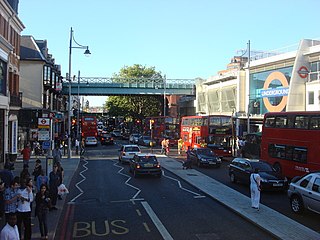
Brixton Road is a road in the London Borough of Lambeth, leading from the Oval at Kennington to Brixton, where it forms the high street and then forks into Effra Road and Brixton Hill at St Matthew's church at the junction with Acre Lane and Coldharbour Lane. Brixton Market is located in Electric Avenue near Brixton Underground station and in a network of covered arcades adjacent to the two railway viaducts. The market arcades were declared listed buildings in 2009 following controversial proposals by Lambeth Council to replace them with a large US-style mall. The former "Brixton Oval" is at the southern end with Lambeth Town Hall, the Ritzy Cinema, the Brixton Tate Library and St Matthew's church. The space was renamed Windrush Square in 2010, in honour of the area's early Caribbean migrants and the HMT Empire Windrush, which in 1948 brought 492 passengers from Jamaica to London.

Railton Road runs between Brixton and Herne Hill in the London Borough of Lambeth. The road is designated the B223. At the northern end of Railton Road it becomes Atlantic Road, linking to Brixton Road at a junction where the Brixton tube station is located. At the southern end is Herne Hill railway station.

Michael Groce is a poet and community worker. His mother, Cherry Groce, was shot and paralysed by police during a dawn raid on her home starting the 1985 Brixton riot in London, England. He is now a published poet, having won the Cheltenham Poetry Prize, and actively engages with young people to inform them of his own experiences.
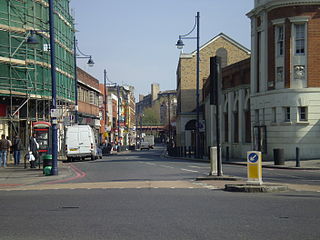
Coldharbour Lane is a road in south London, England, that leads south-westwards from Camberwell to Brixton. The road is over 1 mile (1.6 km) long with a mixture of residential, business and retail buildings – the stretch of Coldharbour Lane near Brixton Market contains shops, bars and restaurants. Between the junctions of Coldharbour Lane and Denmark Hill in Camberwell SE5 and Coldharbour Lane and Denmark Road lies part of the boundary between Lambeth and Southwark boroughs. The other end of Coldharbour Lane meets Acre Lane in central Brixton to form the A2217.

The Brixton murals are a series of murals by local artists in the Brixton area, in south London. Most of the murals were funded by Lambeth London Borough Council and the Greater London Council after the Brixton riots in 1981.
In April and July 1981, there were riots in several cities and towns in England. The riots mainly involved Black English youth clashing with police. They were caused by tension between Black people and the police, especially perceived racist discrimination against Black people through increased use of stop-and-search, and were also fuelled by inner-city deprivation. The most serious riots were the April Brixton riots in London, followed in July by the Toxteth riots in Liverpool, the Handsworth riots in Birmingham, the Chapeltown riots in Leeds, and the Moss Side riots in Manchester. There were also a series of less serious riots in other towns and cities. As a result of the riots, the government commissioned the Scarman Report.
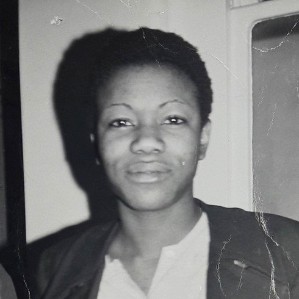
Olive Elaine Morris was a Jamaican-born British-based community leader and activist in the feminist, black nationalist, and squatters' rights campaigns of the 1970s. At the age of 17, she claimed she was assaulted by Metropolitan Police officers following an incident involving a Nigerian diplomat in Brixton, South London. She joined the British Black Panthers, becoming a Marxist–Leninist communist and a radical feminist. She squatted buildings on Railton Road in Brixton; one hosted Sabarr Books and later became the 121 Centre, another was used as offices by the Race Today collective. Morris became a key organiser in the Black Women's Movement in the United Kingdom, co-founding the Brixton Black Women's Group and the Organisation of Women of African and Asian Descent in London.
The Chapeltown Riots of 1981 took place in the Leeds district of Chapeltown in West Yorkshire, England, during a time when many other areas of the UK were suffering similar problems. The riots unfolded in July 1981 from a background of racial tension, inner city poverty, poor housing and high unemployment. This brought high tension, particularly amongst the area's Caribbean community, culminating in attacks on the local police.

121 Centre was a squatted self-managed social centre on Railton Road in Brixton, south London from 1981 until 1999. As an anarchist social centre, the venue hosted a bookshop, cafe, infoshop, library, meeting space, office space, printing facility, and rehearsal space. Organisations using the space included Food Not Bombs, Anarchist Black Cross prisoner aid chapters, an anarcho-feminist magazine, a squatters aid organisation, and an anarchist queer group. Regular events at 121 Centre included punk concerts, a women's cafe night, and a monthly queer night. The centre kept a low profile and was one of the longest-lasting squats in London.
Children at Play is a mural at the rear of the Brixton Academy on Stockwell Park Walk in Brixton. Children at Play was commissioned by Lambeth Council in the wake of the 1981 Brixton riot, it was painted between 1981 and 1982 by Stephen Pusey. The mural is intended to display 'racial harmony between Lambeth's schoolchildren'. Pusey and a council employee searched the area before finding the site, which was then the disused Astoria cinema. The mural is highly visible to residents of the Stockwell Park Estate, who were consulted as to the final design for the mural. The initial designs for the mural reflected the tensions and struggles of the people of Brixton, but these were subsequently perceived as an unwanted negative perception of the area. The final image was chosen to reflect harmony between the different races of the area.
References
- ↑ Mitchell, Davis (2002). "Initiatives in policing London's Brixton since the 1981 riots". In Evans, David; Fyfe, Nicholas; Herbert, David (eds.). Crime, Policing and Place: Essays in Environmental Criminology. Routledge. pp. 286–304. ISBN 9781134943579.